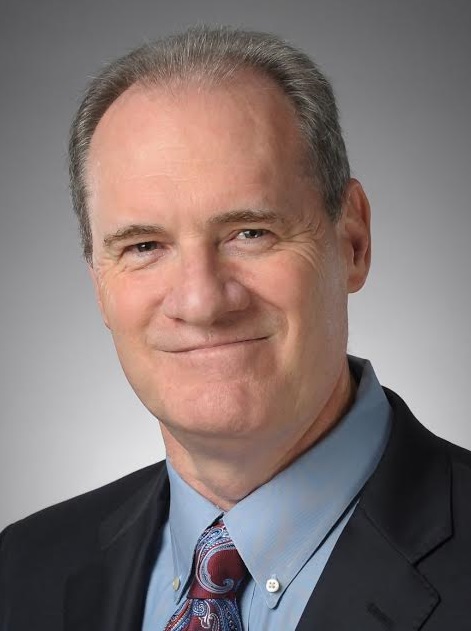Carpe Diem: How Digital Origination Strategies Can Support the Broker-to-Banker Transition

For brokers looking to make the transition into mortgage banking, the timing couldn’t be better. Depository lenders are increasingly giving up market share to non-bank mortgage lenders, and with the current rate environment, non-bank lenders are able to offer borrowers extremely competitive rates. What’s more, advances in digital origination technology are poised to reduce the cost to originate, which eases the start-up capital requirements needed to make the leap.
These cost savings are significant, as one of the biggest challenges to making the broker-to-banker transition is establishing the necessary net worth to qualify for licensing and a decent warehouse line of credit. With access to the right technology, and the right correspondent partner, brokers can make this transition more easily than ever.
For years, the mortgage industry has waited with cautious trepidation for the eMortgage to become a reality. Technology and regulation have finally caught up with the industry’s vision, but many are still reluctant to take the leap.
Part of this reluctance stems from the perception that investors and/or warehouse banks do not allow eClosings or won’t purchase an eMortgage. This is false. There are numerous investors that have established guidelines for eClosing and eMortgages, and two of the biggest mortgage investors in the country, a.k.a. Fannie Mae and Freddie Mac, have been pushing lenders for years to adopt eMortgage strategies.
On the warehouse side, most banks have been reluctant to adopt an eWarehouse strategy because the efficiencies inherent in the eMortgage process would reduce the amount of time loans sat on the warehouse line before being purchased, thus cutting into the bank’s revenue from interest and fees. In recent months, several forward-thinking warehouse banks like FirstFunding and Merchants Bank of Indiana, have overcome this reluctance and are poised to provide funding for and purchase loans closed via eClosing and eNotes.
Though the industry hasn’t fully dived into the complete eMortgage, it also hasn’t been totally reluctant to adopt digital origination strategies either. According to the 2015 Xerox Path to Paperless Survey, nearly 80 percent of survey respondents indicated they were utilizing eDelivery to send disclosures and other documents to borrowers. In addition, almost 75 percent said they had implemented paperless origination and underwriting processes, and just over 70 percent are incorporating eAcknowledgement and eSignatures with eDelivery of disclosures. More than 60 percent of respondents are delivering closing documents to their settlement agents electronically, and more than half are eDelivering closed loan files to investors.
These numbers aren’t that surprising as many lenders have adopted these strategies in order to comply with the TILA-RESPA Integrated Disclosure (TRID) timing requirements, and data from the survey backs that assumption up, as 92 percent of respondents said they expect to see an increase in their use of eDelivery because of TRID. However, there’s a very clear point in the process where digital origination strategies drop off.
Based on the survey, only five percent are utilizing eDelivery with eSignatures at the closing table (i.e., eClosing), and just four percent are executing a complete eMortgage where the promissory note is being signed electronically (i.e., eNote). For brokers making the transition to mortgage banking, this presents a significant opportunity to differentiate themselves in the market while also gaining much-needed efficiency.
Expense management is a critical concern for emerging mortgage bankers. Start-up costs and overhead can quickly eat into available capital, which can have a negative impact on overall net worth and impede the ability to increase production. Using the full complement of digital origination strategies (eDelivery, eSignatures, eClosings and eNotes) eliminates many of the “sunk costs” inherent in the traditional closing process, such as shipping and labor expenses for the sole purpose of organizing and delivering documents to the investor. This frees up capital that can be invested in more mission-critical areas like quality control, underwriting and compliance.
Speaking of compliance, this is another area that can torpedo an emerging mortgage banker. Anytime you are a beginner at something, having the time to self-correct can mean the difference between success and failure. When a correspondent lender can submit their loan file information to the investor electronically, that gives the investor more time to review the loan pre-funding, and should errors be found, the lender then has time to address the errors before reaching the closing table and potentially having the investor reject the loan.
Furthermore, most eSignature platforms have built-in quality control mechanisms to ensure every document is signed where and how it should be, and with eClosings, all closing documentation is stored electronically, thus jettisoning several menial post-closing tasks that can have significant implications for compliance.
If expenses and compliance represent two of the three legs emerging mortgage bankers need in order to succeed, managing relationships with investors and warehouse banks is unequivocally the third. Metrics such as loan quality, pull-through rates and days on the warehouse line must be continuously managed to ensure small issues don’t become larger problems that negatively impact these critical relationships.
As previously mentioned, digital origination technology can have a demonstrable impact on loan quality, but, it can also aid in pull-through and warehouse line management. Most warehouse banks will start off with a best-efforts engagement with emerging mortgage bankers, as not every broker is able to make a successful transition into mortgage banking.
As the emerging mortgage banker is able to achieve high pull-through rates and demonstrate consistent loan quality, they will garner better pricing, though those incentives are going to be capped. Digital origination strategies aid in achieving a high pull-through rate by creating a lean, fully optimized origination environment that supports quick turn times and eliminates the errors associated with manual, paper-based lending.
Of the two kinds of warehouse relationships, mandatory delivery is the far more profitable of the two for the mortgage banker. The major deciding factor in transitioning from best-efforts to a mandatory delivery engagement is the emerging mortgage banker’s ability to demonstrate operational efficiency, sound fiscal management and foundational understanding of mortgage origination–all of which can occur much more easily when digital origination strategies are used.
Once the type of engagement has been established, the emerging mortgage banker must turn its attention to managing the warehouse pipeline. What digital origination strategies can offer in this regard is the ability to dramatically decrease the number of days loans sit on the warehouse line between closing and purchase. Not only does this save money in the form of reduced interest and fees, but it also enables the emerging mortgage banker to do more with less.
For example, an emerging mortgage banker with $250,000 in net worth could secure a warehouse line worth roughly $3.75 million. Because most loans sit on a warehouse line for around 20 days due to the inefficiencies of the current origination process, the banker has to be conservative with how much of the line is used at any given time. By leveraging digital origination strategies, including eNotes, this same mortgage banker could achieve the same volume using a warehouse line one-fifth the size (i.e. $750,000) because of the potential to reduce that turn time from weeks to a day or two.
To put it another way, that mortgage banker could originate five times the volume without needing an increase in their line of credit. That kind of efficiency and success is what establishes a productive relationship with investors and the warehouse provider and enables emerging mortgage bankers to rise up the ranks to achieve full-fledged mortgage banker.
While the mortgage bankers have been hesitant to adopt eMortgage strategies, they are not pessimistic about the future of the eMortgage in mortgage banking. In the Xerox survey mentioned earlier, more than half of all respondents said they believe eMortgages will account for at least half of all loan production within four years, which is a nearly 55 percent increase over responses to that question in 2014.
Clearly, the industry sees the value in digital origination, even if it hasn’t implemented it in full force. For the forward-thinking, aspirational-minded mortgage broker, now is the time to make the digital leap into mortgage banking.

Jeff Bode is owner and CEO of Addison, Texas-based lender Mid America Mortgage Inc., which operates in the retail, wholesale and correspondent lending channels. Jeff can be reached by e-mail at [email protected].
This article originally appeared in the September 2016 print edition of National Mortgage Professional Magazine.





